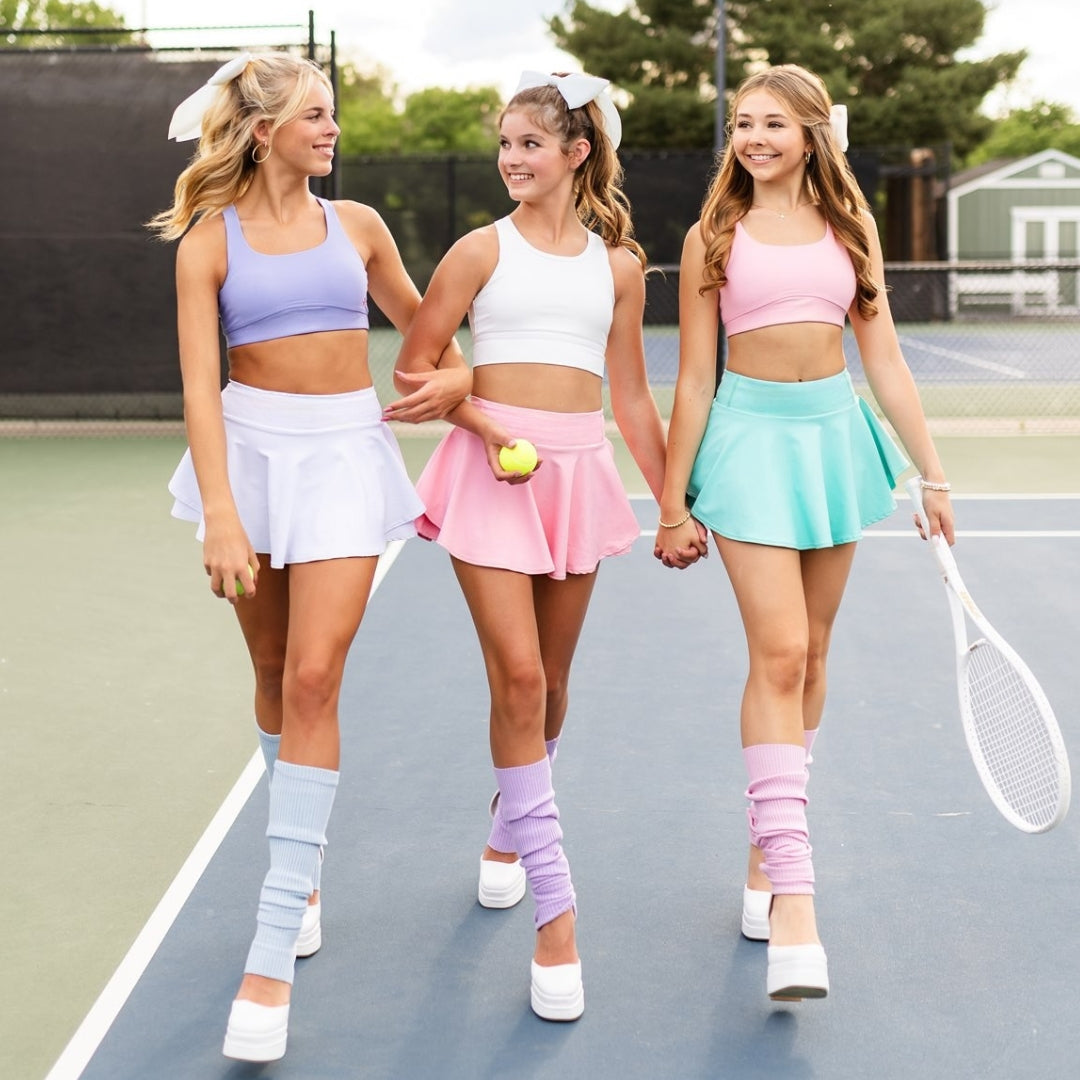
You read that title right, folks. COVID-19 has impacted all of our lives this year in weird and dreadful ways, but what may prove to be the strangest bit for athletic girls in some areas of the country is the postponement of fall sports until January.
While not the case globally, in the United States, some communities hit hardest by the coronavirus have opted to delay fall sports until the new year in hopes that viral spread will have calmed down and extracurricular athletics can resume with adequate distancing and prevention methods implemented.
At Dragonwing, we support these sorts of schedule shifts as a way to keep our athletes safe, while also respecting the states and municipalities who have opted to hold steady to a regular fall sports season with stringent safety precautions as a means of retaining normalcy in our children’s lives.
While this seasonal pushback may not be as shocking to girls who play a different sport every season, fall athletes who cheer, run cross country, or play field hockey, tennis, golf or volleyball may be in for a rude awakening as temperatures drop for practices, cross-training and big games.
According to Dr. James Penna, a professor at Stony Brook University and expert on sports medicine, cold weather can seriously affect athletic performance and cause increased risk of injury, asthma flare ups, and general discomfort which can take a player out of the game mentally.
So how can you get your athlete ready for a familiar sport in a colder and unfamiliar season? We have you covered (literally!), with some tips and recommendations to help fire up your squad and keep them focused.
Stretch, Stretch, Stretch!
This is a no-brainer, and your girl’s coach will likely emphasize it during practices and pre-games, but a proper warm-up routine is essential to staying injury free during winter sports. What got an athlete loose and ready to play in the fall may not cut the mustard for colder temperatures where their bodies take longer to get limber.
It’s especially important to focus stretches on the ankles, calves, knees, hamstrings and quadriceps, as those leg muscles and tendons can be quite stiff in the cold weather. Nobody wants to get sidelined with an unfortunate injury after missing all this playing time in the fall, so make sure you’re stretching those legs!
As a rule of thumb, 10-15 minutes of stretching after properly warmed up is generally good enough to avoid injury, but with colder temperatures on and off the field, it may be necessary to bump those numbers up.
Also, if you need more information about stretching and warm up routines, check out this dynamic warm up video from Breanna Stewart or some stretching advice from Dr. Lindsay DiStefano
Stay Dry
Greg Heuer, MS, head trainer for the women’s ski and snowboard teams during the Sochi Olympics once said, “I’ve been warmer in a dry -20 degrees than I was in a balmy 20 degrees.”
That atmospheric moisture can be a big problem for athletes who are expected to perform outside in the winter. To avoid that bone chilling wet and cold feeling, it’s important to have the proper fabrics that wick moisture and help an athlete stay dry and warm during practices and games.
To stay warm and dry in colder climates, it is key to wear the right fabrics.
- Avoid cotton, as it soaks up a ton of moisture that can pull heat right off a player and drop their core temperature.
- Go with an inner wicking layer made from polypropylene, wool, bamboo fibers, or nylon. These fabrics wick moisture while retaining heat.
With the right sportswear made from a wicking material or blend of wicking fibers, you can be sure your athlete stays warm and toasty during long stints outdoors.
As a wicking base layer, we recommend one of our Racer Seamless Sports Bras and a Cold Weather Long Sleeve Tee to really keep that sweat and damp air away while insulating against the cold.
Learn To Love Layering
Once you know a bit about the right fabrics to pick for sports bras, support tops, and thermal gear, proper layering is the next step to ensure your child stays comfortable on the field.
Typically, most parents hedge on the side of overdoing layers to keep their tweens and teens as warm as possible, but this can actually be counterproductive.
As with a lot of things in life, less is more when it comes to layering, so you will want to have a solid base layer underneath a jersey or uniform to keep the player warm, but don’t stack multiple layers of thermals at first, as that can lead to sweating which can make an athlete cold as we just mentioned.
Remember, your athlete is going to be out on that field moving and once they get warmed up, it’s really likely that a solid thermal will keep them just warm enough to stay in the game while skipping the excessive sweating that comes with being over clothed during vigorous exercise.
It is also important to remember that your teen or tween can always add an extra layer or two if things get extra chilly during a game or practice, but once they get cold from sweating through multiple layers, it’s really tough to get warmed back up again. So, keep an extra thermal top or two in the bag just in case, but unless it gets downright frigid, we have them covered!
We hope that helps you and your daughter get ready for an awesome winter season, as surreal as it might be for your fall athletes to be playing in the cold.
Make sure to tag us in any big game moments for a chance to be featured on the Dragonwing socials, and, as always, feel free to reach out if you have any questions.
Stay safe,
MaryAnne

